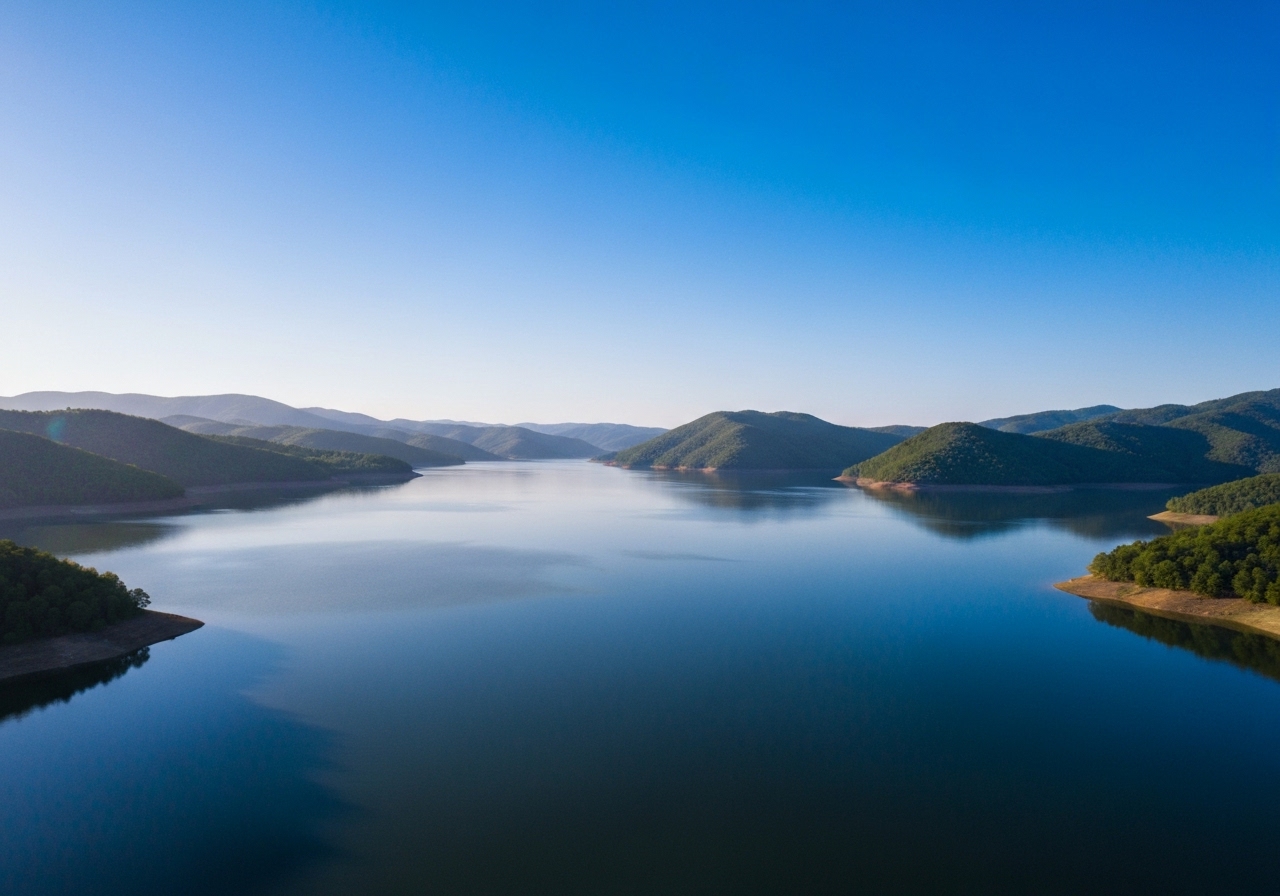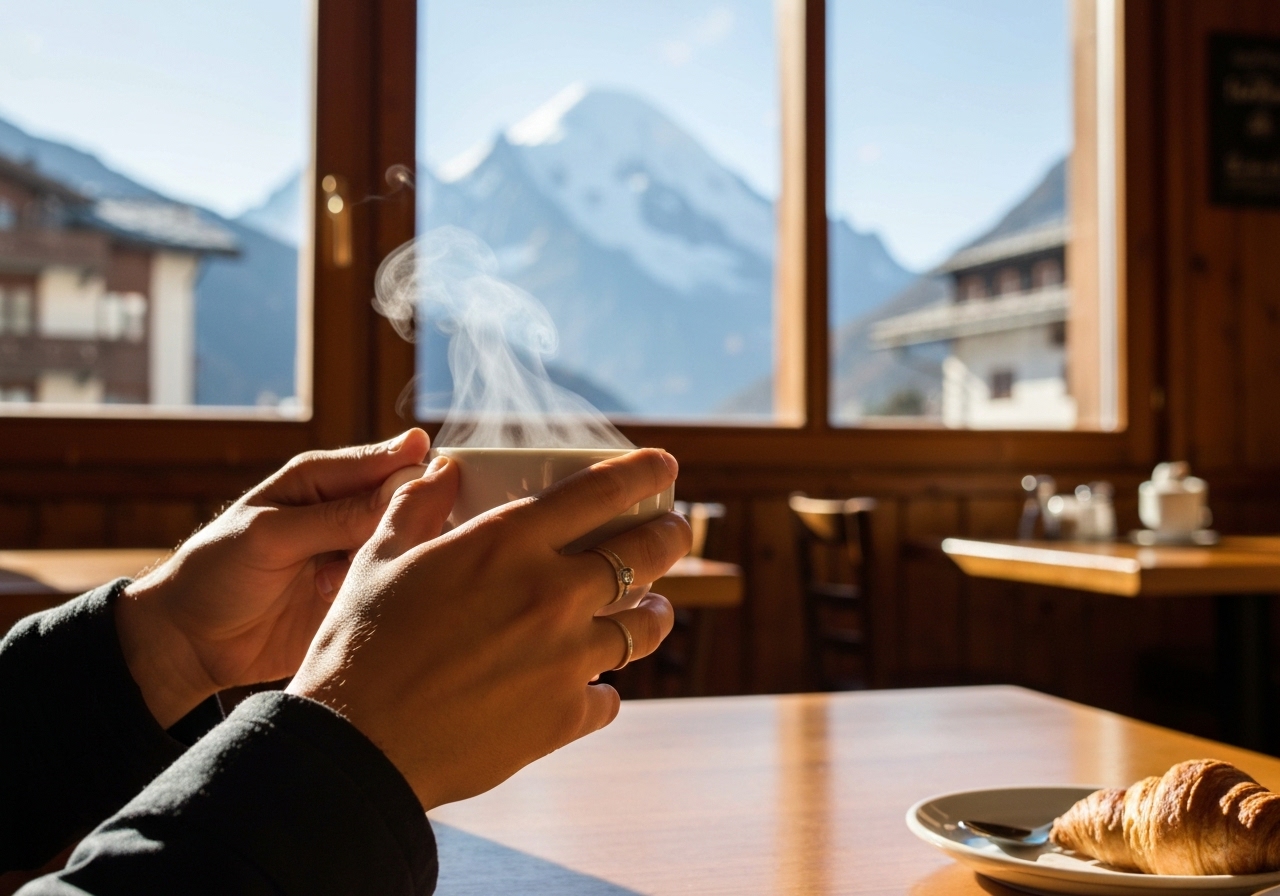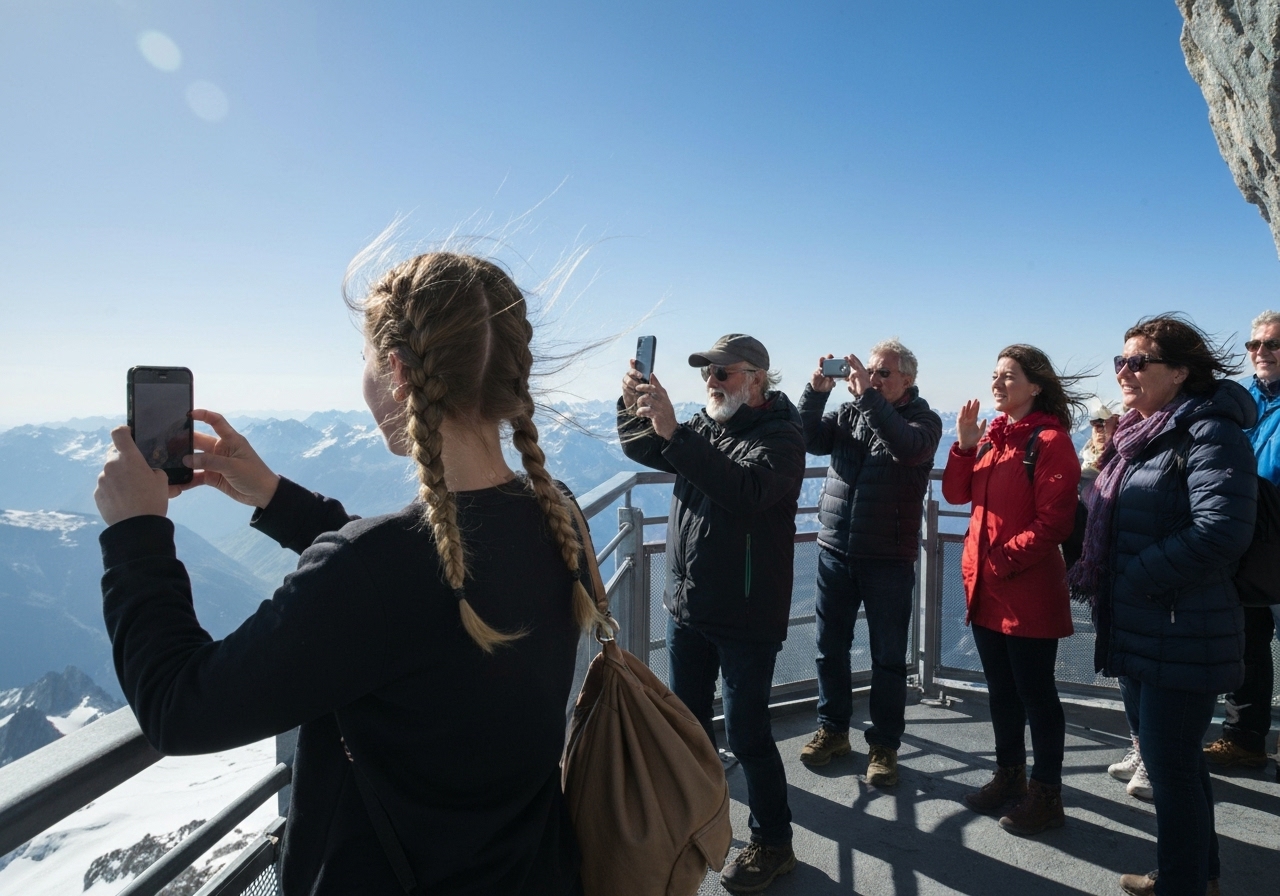


Aiguille du Midi: standing at the edge of everything
I'm sitting in a small café in Chamonix, warming my hands around a cup of coffee while trying to process what I experienced this morning. My mind is still somewhere up there, at 3,842 meters, where the air is thin and the world looks completely different.
This morning I woke up at 6:30, well before my alarm. The anticipation of heading up to Aiguille du Midi had me checking the weather app repeatedly, afraid that clouds might roll in and obscure the views. Thankfully, the forecast held true – clear skies with temperatures around 12°C in town, though significantly colder up top.
I arrived at the cable car station at 8:20, ten minutes before the first departure. There was already a small queue forming – mostly photographers and serious hikers eager to make the most of the day. The woman at the ticket counter smiled when I asked about visibility conditions.
"Perfect day for it," she said. "You can see forever up there today."
The cable car itself is an engineering marvel, climbing 2,800 meters in just 20 minutes. The first section rises dramatically from town, and I found myself pressing closer to the window with each passing minute, watching Chamonix shrink beneath us. Several Japanese tourists gasped as we swung over a particularly steep section, and I couldn't help but join them.
But nothing prepared me for the final arrival. Stepping out at the top station feels like entering another world entirely. The air is noticeably thinner – I found myself taking deeper breaths – and the cold hits immediately. The temperature display showed -5°C, but the sun was intense, creating that peculiar mountain contradiction of freezing and burning simultaneously.
And then there's Mont Blanc itself. Standing on the viewing platform, I was closer to the summit of Western Europe's highest mountain than I've ever been to any major peak. It's just there, massive and implacable, seemingly close enough to touch. The scale is impossible to convey – photos don't do it justice at all.
The most intense moment came at "Le Pas dans le Vide" (Step into the Void) – a glass box that extends out from the building with nothing but clear glass between you and a 1,000+ meter drop. I hesitated before stepping in, watching as a young couple took selfies while standing on what looks like thin air. When my turn came, my heart pounded so hard I could hear it in my ears.
One step. Two steps. And then I was standing there, suspended in space, with glaciers and jagged peaks spreading out in every direction. I stayed only a minute or so, but it felt much longer – time stretches strangely when you're confronting both beauty and mortality at once.
Throughout the observation decks, I kept overhearing fragments of conversations in at least six different languages. A common theme emerged – people struggling to find words adequate to the experience. I understood completely. How do you describe something that makes you feel simultaneously tiny and expansive?
"C'est indescriptible," an elderly French man said to his wife, and I nodded in agreement though they weren't talking to me.
I spent nearly three hours up there, moving between different viewing platforms, watching light play across the snowfields, and occasionally just sitting in silence. At one point, I struck up a conversation with a Swiss geologist who pointed out various formations and explained how these mountains are still growing, pushed upward by the same forces that created the Alps millions of years ago.
"They're young mountains, geologically speaking," he said. "Still teenagers, really."
The descent felt almost like returning from another planet. As we dropped back into the valley, I watched the vegetation gradually return – first sparse alpine plants, then stunted pines, and finally the full forests surrounding Chamonix. The contrast between the austere world above and the lush valley below is striking.
Now, back in town and still processing the morning, I'm planning the rest of my day. I think I'll walk along some of the lower hiking trails this afternoon – my legs need stretching after yesterday's train journey, and there's a path that follows the river with views of the mountains from below. The forecast shows the good weather holding until evening, so I want to make the most of it.
Tomorrow I'm considering visiting Mer de Glace, France's largest glacier. There's an ice cave carved into it that you can walk through, though I've read that it needs to be re-carved each year as the glacier retreats due to climate change. It's a sobering reminder of changes happening even to these seemingly eternal landscapes.
For now, though, I'm content to sit here a while longer, watching the town go about its business while Mont Blanc looms above, visible from almost every street corner. There's something deeply centering about being in a place where human concerns seem so small against the backdrop of geological time.
Thirty-six days into this journey, and I'm beginning to understand why people are drawn to mountains. They offer a perspective that's hard to find elsewhere – a reminder that most of our daily worries are as temporary as footprints in snow.
!View from Aiguille du Midi with Mont Blanc in the background The indescribable view from Aiguille du Midi platform. Mont Blanc seems close enough to touch, though it's still kilometers away.